AOL News: Chupacabras vs Chupacabra Again
Posted by: Loren Coleman on November 4th, 2010
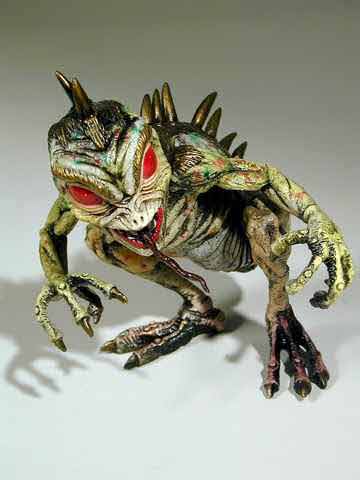
Lee Spiegel of AOL News has written an intelligent and balanced summary of the latest bit of research confirming what some of us have been saying for a couple decades: The skinny, hairless “chupacabra” of Texas and Mexico are merely canids (dogs, coyotes, foxes, coydogs, etc.) with mange. Those reports have little or nothing to do with the original Chupacabras of traditional Puerto Rican sightings, from 1995 to present.
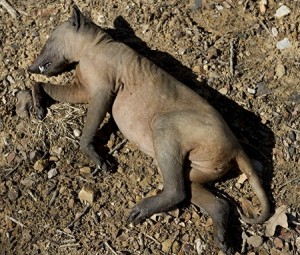
In “Chupacabra Monster May Be Mitey-er Than First Imagined”, despite his best efforts to make sense of the “chupacabra” vs “Chupacabras” mess, Spiegel appears to have been undermined by an overzealous editor who was unaware of the correct use of “Chupacabras.” (See “Chupawhat?”)
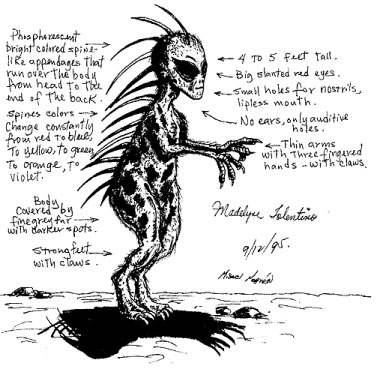
“It’s a wonderful explanation and I’m glad there’s scientific proof for what we already knew, but it doesn’t explain a lot of the reports from Puerto Rico and other places,” said Loren Coleman, director of the International Cryptozoology Museum in Portland, Maine.
Okay, I’ll pass along the quotations from me in the piece, and point you to the article to read more.

My esteemed colleague Ben Radford is quoted extensively, and we seem to be competing to see who gets to say that we knew it was mange the earliest in the article. He won this round.
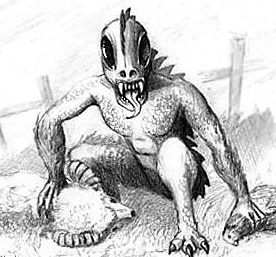
And while cryptozoologist Coleman thinks there’s an unknown animal out there that’s worth investigating, he agrees that the canine-type animals of recent times are probably not the real chupacabras.
“The exaggeration of the body form, without hair, always makes people think that they’re looking at a monster. This isn’t a monster — it’s just an animal that has a medical condition.”
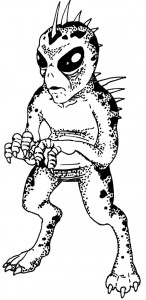
I was not caught comparing a “chupacabra” with Jennifer Lopez, of course, as they are not alike at all. I only reserve that for “Chupacabras.”

“Chupacabras: It’s sort of like Jennifer Lopez, kind of cross-cultural.”
– Loren Coleman, as quoted by ABC News, 1999.
Thank You.
About Loren Coleman
Loren Coleman is one of the world’s leading cryptozoologists, some say “the” leading living cryptozoologist. Certainly, he is acknowledged as the current living American researcher and writer who has most popularized cryptozoology in the late 20th and early 21st centuries.
Starting his fieldwork and investigations in 1960, after traveling and trekking extensively in pursuit of cryptozoological mysteries, Coleman began writing to share his experiences in 1969. An honorary member of Ivan T. Sanderson’s Society for the Investigation of the Unexplained in the 1970s, Coleman has been bestowed with similar honorary memberships of the North Idaho College Cryptozoology Club in 1983, and in subsequent years, that of the British Columbia Scientific Cryptozoology Club, CryptoSafari International, and other international organizations. He was also a Life Member and Benefactor of the International Society of Cryptozoology (now-defunct).
Loren Coleman’s daily blog, as a member of the Cryptomundo Team, served as an ongoing avenue of communication for the ever-growing body of cryptozoo news from 2005 through 2013. He returned as an infrequent contributor beginning Halloween week of 2015.
Coleman is the founder in 2003, and current director of the International Cryptozoology Museum in Portland, Maine.










Okay, on “Chupacabras” vs “chupacabra” the first is the Spanish spelling, we all get that, but “chupacabra” is an English transliteration and therefore appropriate for use by English speaking cryptozoologists. Adopting nouns from other languages is a long held tradition and does not show disrespect to the cultures of origin. Instead of replacing the foreign noun with an English equivalent the word is adopted in whole, similar examples would be armadillo (not pronounced armadi-yo), llama (not pronounced ya-ma), Japan (not pronounced nee-pon), Germany (from the Latin Germania). I know the whole argument kinda falls apart with “tortilla chips” and “jalapenos”, but that’s English for you.
Secondly, I have long held that the entire Chupacabra conversation is complicated by it’s common use among Hispanics. Just because someone calls something a “Chupacabra” doesn’t mean that it is. As near as I can tell we have at least three or four different types of cryptid labeled “Chupacabra”.
1) The coy-dogs that the media commonly refers to as “Chupacabra” are clearly not responsible for bloodless chickens and goats. However, as I’ve written about on earlier postings, we should not dismiss these “Cuero-canids” (sorry, my nickname for them) as non-cryptids. While they may not be very exotic they clearly have had an impact on the Chupacabra lore long before their discovery as well as being an interesting case-study. There are reports of these animals going back for decades and they have been spotted as far north as Virginia. I believe that these canids do represent a wild population of hairless coy-dog and should be studied to better understand how other cryptids avoid detection.
2) The reptilian Chupacabra (more importantly the three toes) I believe are related to the Colorado River Dinosaur sightings. While I’m not saying people are seeing small theropods there seems to be some correlation and they should not be seen (strictly) as separate phenomena.
3) The “Metepec Monstrosity”, the small monkey-eque mummy found in Metepec Mexico. Though no American scientists have been able to examine the creature the Mexican scientists who have (as shown on Monsterquest, as well as German, Japanese, and Mexican shows as well) have determined that this animal represents a unique species, that it is not a gaff or hoax. It would appear to be a perfect match for the “alien” Chupacabra and should be taken more seriously.
4) My grandfather told stories about cattle being drained of blood or mutilated on his childhood farm. Strange “vampiric” deaths are not new in Texas, they are not the result of new migrations from some cryptid from Latin America, they have always been here. I don’t think that any of the above mentioned “chupies” are to blame and represent another unknown phenomena. This is the true “Chupacabra” because it would actually drain an animal of blood and I doubt if we’re any closer to this critter (assuming it is an animal).
Before this goes too far, let me clarify immediately that #3 noted above is a confessed hoax.
As several of us (including myself and Jeff Meldrum) were secretly trying to be pulled into this, this seemed from the beginning to only be a mummy monkey.
It turns out is was a mummified squirrel monkey.
See Forgetomori’s good blog on this for full details.
Thanks for the correction Loren, I hadn’t heard anything outside of the reports on C2C and Monsterquest. I suppose I have to go back to my usual stance of not trusting ANYTHING on the Discovery channel (but that is a different rant altogether). However, my broader point is that the name “Chupacabras” being used very liberally as an Hispanic version of “Boogie man” has muddied the waters in regards to pursuing any cryptids in Latin America and the Southwest.
While I will not say that the Sil/Species movie connection is OVER played (btw let’s get N.H. and JLo photos when discussing chupies) I will say that the connection is played incorrectly. While it is possible the initial witness is delusional and mistook a known animal with a billboard for Species, I think it is more likely that she saw something unknown and equated it with the creature from the movie since it was currently in the popular conscience. That report gets overblown and artists create an animal that looks like Sil but still has a few features that the witness actually saw. As time goes by and the word spreads we have the art influencing how future reports are described. If you remove all of the “Sil”-esque aspects of the (traditional) Chupacabras you are clearly looking at an animal that resembles the Dover Demon and I think that is the key to understanding what our current problem is: our current understanding of chupie is really a hodgepodge of multiple cryptids and movie references that leaves us with more myth than fact.
I’ve always thought that it could be some form of giant insect…the spikes, large eyes, wings (in some reports) etc…
BTW, I live in Colorado and spoke with a gentleman who investigated one of the theropod dino things down in Cortez area…A lady had one walk through her back yard and called him up because he runs the reptile museum at the entrance to Mesa Verde.-he went to her house which had a pool or pond in the back, so it coulda been thirsty. This is a gigantic wild area with mountains, ravines, cliffs, deserty areas etc…
I read of a bigfoot sighting here as well and also met a fellow who swears he heard stories of giant ground sloths being alive in the area!????! SW Colorado Is truly a ripe area for exploration, and expedition(s).
Good post, Loren. Next time I’m sure you’ll be quoted before me in pointing out mange!
Re [other comments by others]: “I think it is more likely that she saw something unknown and equated it with the creature from the movie since it was currently in the popular conscience. That report gets overblown and artists create an animal that looks like Sil but still has a few features that the witness actually saw.”
Actually Tolentino saw Species before her sighting, but you’re right that the depiction by Jorge Martin is not as accurate as it could be– in part because he seems to have combined the characteristics of several sightings.
“you are clearly looking at an animal that resembles the Dover Demon”
I’m not so sure about that… take a close look at the Puerto Rican descriptions offer a pretty wide variety of features. In fact, Scott Corrales claims there are “hundreds” of identical reports to Tolentino’s description, though I don’t know where he got that information, as it doesn’t appear in any of his books (or, apparently, anywhere else).